
Domestic Violence and Children: Questions and Answers for Domestic Violence Project Advocates
Includes helpful information on how children react to domestic violence.
The following resources on child trauma were developed by the NCTSN. To find a specific topic or resource, enter keywords in the search box, or filter by resource type, trauma type, language, or audience.

Includes helpful information on how children react to domestic violence.
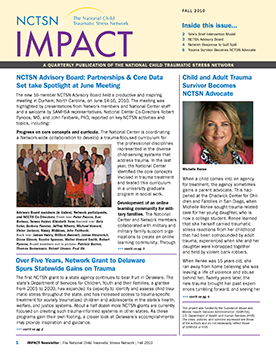
Highlights a few NCTSN affiliates, advocates, and the Advisory Board.

Highlights what ten things juvenile court judges should know to best meet the needs of traumatized children who come into their system.
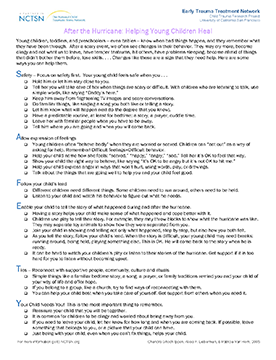
Provides information on how parents can help their young children cope with the aftermath of a hurricane. This fact sheet includes information on how children react, behaviors parents may see, and ways to help.
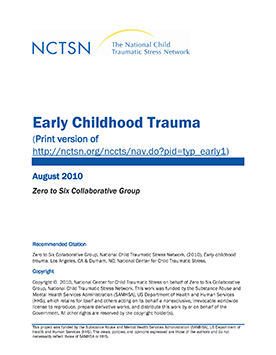
Offers details on how early childhood trauma is unique, the scope of the problem, as well as the symptoms and behaviors associated with exposure to trauma at an early age.
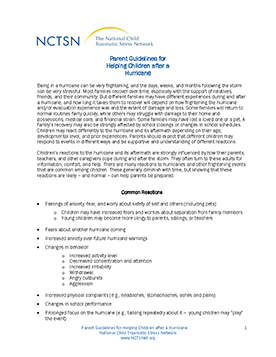
Offers parents guidance on helping their children after a hurricane. This fact sheet describes common reactions children may have after a hurricane, what to do to help, and self-care tips for parents.
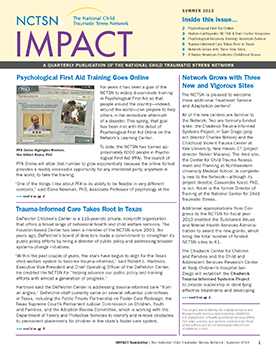
Features a number of articles on the Network's disaster-related work, including its response to the earthquake in Haiti and trainings in American Samoa.
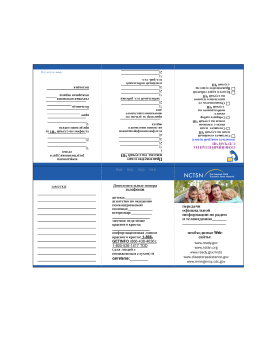
Allows families to list important telephone numbers and other information that could be useful in the case of an emergency.
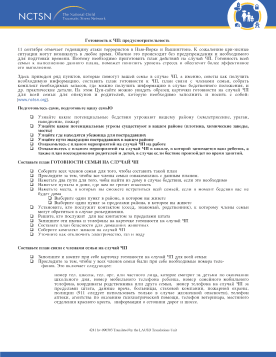
Accompanies the Family Preparedness Wallet Card. This guide helps families develop a safety plan so that they may be prepared in the event of a disaster. This is the Russian version of Family Preparedness: Thinking Ahead.
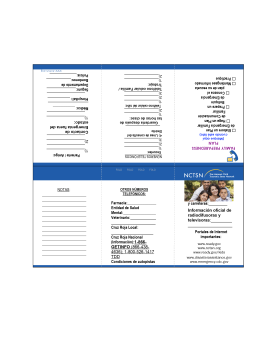
Permite a las familias enlistar números de teléfono importantes y otra información que podría ser útil en caso de una emergencia.
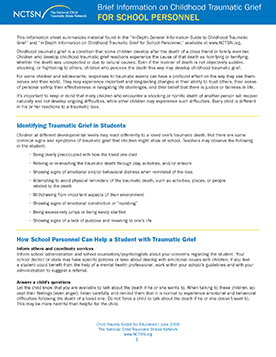
Offers information on childhood traumatic grief. This fact sheet provides descriptions of childhood traumatic grief, normal and typical grief, and what to do for childhood traumatic grief for teachers and school personnel.
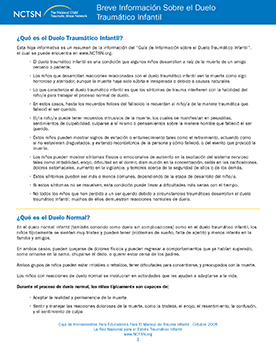
Ofrece información sobre el duelo traumático infantil. Este folleto informativo define lo que es del duelo traumático infantil, el duelo típico y normal y describe qué pueden hacer los maestros y el personal de la escuela ante el duelo traumático.